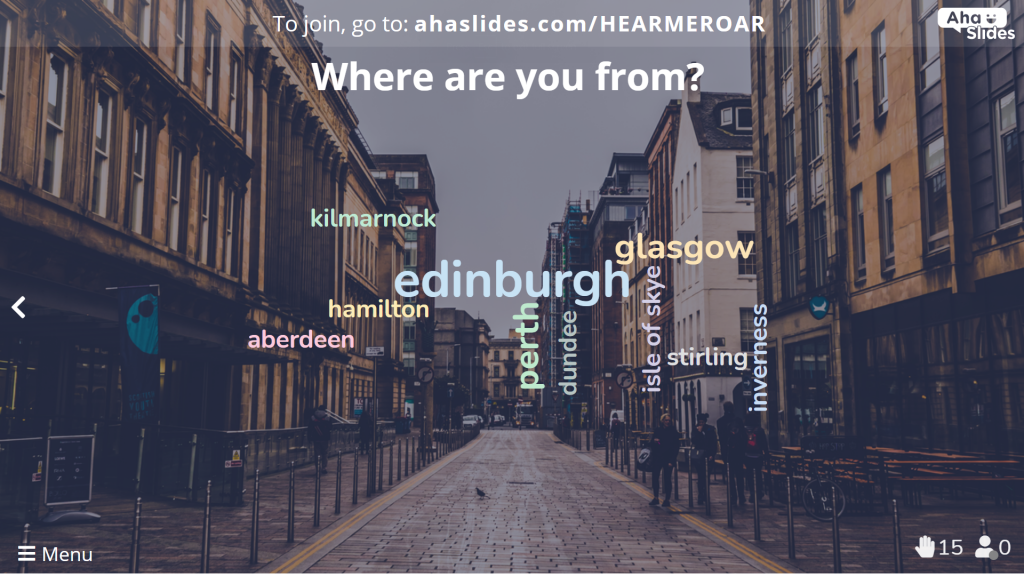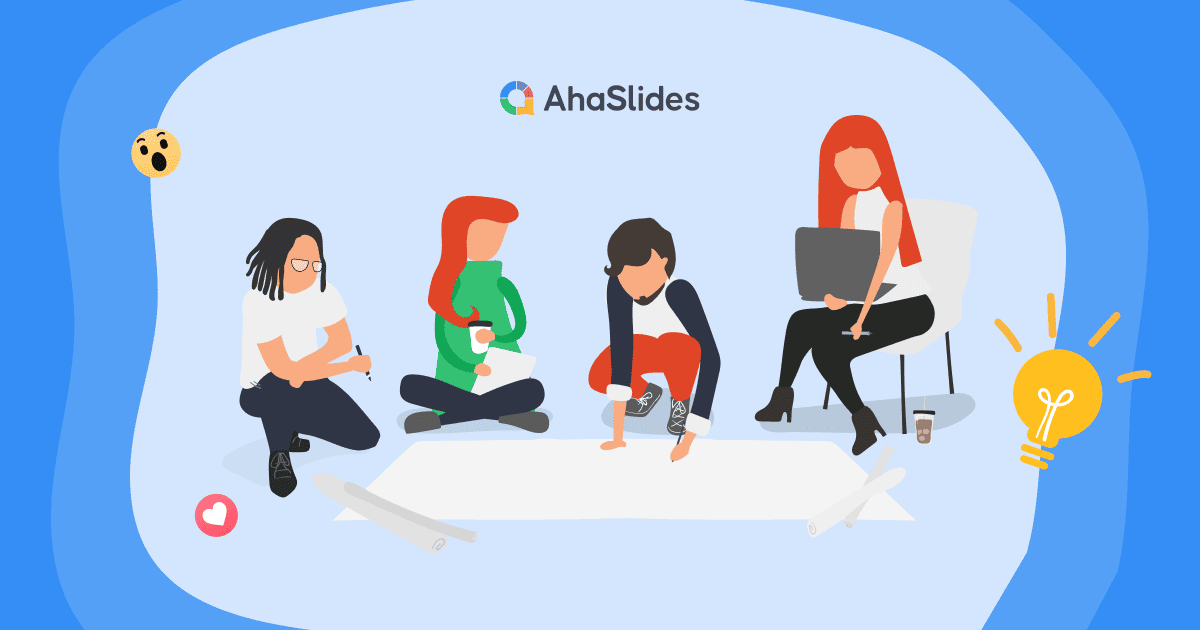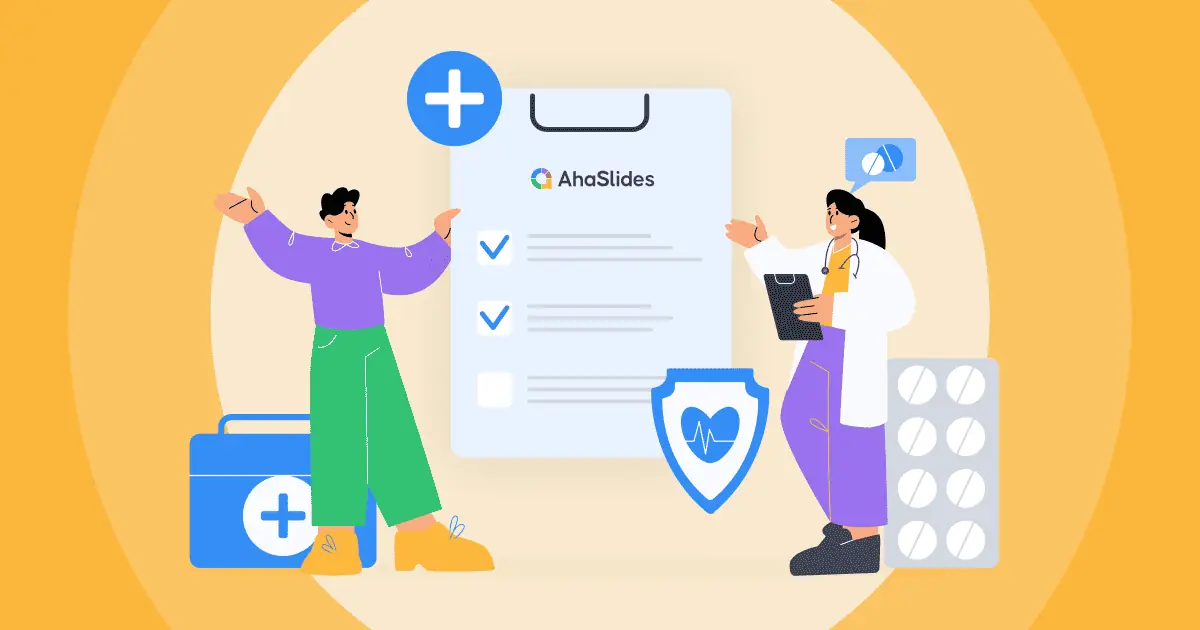Wirtualna facylitacja pozostanie, ale przejście od szkolenia bezpośredniego do wirtualne szkolenie to często więcej pracy, niż wielu facylitatorów zdaje sobie z tego sprawę.
Dlatego dostosowujemy się. Ten przewodnik na rok 2022 dotyczący prowadzenia wirtualnych sesji szkoleniowych zawiera 17 wskazówek i narzędzi do płynnej migracji metod. Niezależnie od tego, jak długo prowadzisz sesje szkoleniowe, jesteśmy pewni, że znajdziesz coś przydatnego w poniższych wskazówkach dotyczących szkoleń online!
Przewodnik po wskazówkach dotyczących szkoleń online
- Porada 1: Zrób plan
- Wskazówka nr 2: Zorganizuj sesję wirtualną
- Porada 3: Rób regularne przerwy
- Porada 4: Mikrozarządzaj swoim czasem
- Porada 5: Przełam lód
- Porada 6: Zagraj w kilka gier
- Porada 7: Niechaj nauczą
- Porada 8: Użyj ponownego uchwalenia
- Wskazówka # 9: Postępuj zgodnie z regułą 10, 20, 30
- Porada 10: Uzyskaj obraz
- Porada 11: Rozmawiaj, dyskutuj, debatuj
- Porada 12: Miej kopię zapasową
- Wskazówka nr 13: Zbierz informacje
- Porada 14: Przejdź do ankiet
- Wskazówka # 15: Bądź otwarty
- Porada 16: Segment pytań i odpowiedzi
- Wskazówka # 17: Rozwiąż quiz
- Najczęściej zadawane pytania
Wskazówki dotyczące lepszego zaangażowania
- KLUCZ DO Szkolenia i rozwój w ZZL w 2024
- Najlepsze pomysły na hostowanie online Warsztaty HRowe w 2024
- Przykłady listy kontrolnej szkolenia w 2024

Szukasz sposobów na szkolenie swojego zespołu?
Zbierz członków swojego zespołu w zabawnym quizie na AhaSlides. Zarejestruj się, aby wziąć udział w darmowym quizie z biblioteki szablonów AhaSlides!
🚀 Weź darmowy quiz☁️
Co to jest szkolenie wirtualne?
Mówiąc najprościej, szkolenie wirtualne to szkolenie odbywające się online, a nie bezpośrednie. Szkolenie może przybierać różne formy cyfrowe, takie jak Webinar, Transmisja strumieniowa w YouTube lub wewnętrzna rozmowa wideo, przy czym cała nauka, ćwiczenia i testy odbywają się za pośrednictwem wideokonferencji i innych narzędzi online.
Jako wirtualny moderatorTwoim zadaniem jest utrzymanie treningu na właściwym torze i prowadzenie grupy prezentacje, dyskusje, Studia przypadków oraz działania online. Jeśli to nie brzmi zbyt różnie od zwykłego treningu, spróbuj go przeprowadzić bez żadnych fizycznych materiałów, za to z dużą siatką twarzy wpatrzonych w ciebie!
Dlaczego szkolenie wirtualne?
Oprócz oczywistych premii odpornych na pandemię, istnieje wiele powodów, dla których możesz szukać wirtualnego szkolenia w 2022 roku:
- Convenience – Wirtualne szkolenie może odbywać się absolutnie wszędzie, gdzie jest połączenie internetowe. Łączenie się w domu jest po prostu nieskończenie lepsze od długiej porannej rutyny i dwóch długich dojazdów do szkolenia twarzą w twarz.
- Zielony – Nie wyemitowano ani jednego miligrama dwutlenku węgla!
- Tani – Brak konieczności wynajmu pokoju, zapewnienia posiłków i kosztów transportu.
- Anonimowość – Pozwól uczestnikom szkolenia wyłączyć kamery i odpowiadać na pytania anonimowo; dzięki temu pozbędziesz się wszelkiego strachu przed osądem i zapewnisz swobodną, otwartą sesję szkoleniową.
- Przyszłość – Ponieważ praca staje się coraz bardziej zdalna, wirtualne szkolenia będą coraz bardziej popularne. Korzyści jest już zbyt wiele, aby je ignorować!
Największe wyzwania adaptacyjne w wirtualnym treningu
Chociaż wirtualne szkolenia mogą przynieść tak wiele korzyści zarówno Tobie, jak i Twoim uczestnikom, przejście rzadko przebiega gładko. Pamiętaj o tych wyzwaniach i metodach adaptacji, dopóki nie nabierzesz pewności co do swoich umiejętności prowadzenia szkoleń online.
| Opis projektu | Jak się dostosować |
|---|---|
| Brak materiałów fizycznych | Korzystaj z narzędzi online, które powielają i ulepszają narzędzia używane podczas spotkań twarzą w twarz. |
| Brak fizycznej obecności | Korzystaj z oprogramowania do wideokonferencji, udostępniania ekranu i interakcji, aby wszyscy byli w kontakcie. |
| Domowe rozrywki | Dostosuj się do życia w domu, z regularnymi przerwami i dobrym zarządzaniem czasem. |
| Trudniejsza praca w grupie | Korzystaj z pokojów wypoczynkowych, aby organizować pracę grupową. |
| Algorytm Zoom preferujący więcej głośników wokalnych | Korzystaj z czatu Zoom, ankiet na żywo i pytań pisemnych, aby każdy miał głos. |
| Potencjalne problemy z oprogramowaniem | Zaplanuj prawidłowo, przetestuj wcześniej i miej kopię zapasową! |
⏰ Wskazówki dotyczące struktury
Wirtualne szkolenie. Utrzymywanie rzeczy interesujących, zwłaszcza w przestrzeni online, naprawdę nie jest łatwe. Posiadanie niezawodnej struktury z szeregiem różnych działań znacznie ułatwia pracę.
Porada 1: Zrób plan
Najważniejszą radą, jaką możemy udzielić podczas wirtualnego szkolenia, jest to zdefiniuj swoją strukturę za pomocą planu. Twój plan jest solidną podstawą Twojej sesji online; rzecz, która utrzymuje wszystko na właściwym torze.
Jeśli trenujesz już od jakiegoś czasu, to świetnie, prawdopodobnie masz już plan. Mimo to faktyczny część wirtualnej sesji szkoleniowej może prowadzić do problemów, o których być może nie miałeś pojęcia w świecie offline.
Zacznij od napisania pytań dotyczących sesji i działań, które podejmiesz, aby wszystko przebiegło gładko:
| Pytania | Działanias |
|---|---|
| Czego dokładnie chcę, aby uczyli się moi stażyści? | Wypisz cele do osiągnięcia przed końcem sesji. |
| Czego ja tego użyję, żeby tego nauczyć? | Wymień narzędzia online, które ułatwią Ci sesję. |
| Jakiej metody nauczania będę używać? | Wypisz, jakie style będziesz stosować podczas nauczania (dyskusja, odgrywanie ról, wykład…) |
| Jak mam ocenić ich naukę? | Wypisz sposoby, w jakie sprawdzisz ich zrozumienie materiału (quiz, pozwól im uczyć…) |
| Co mam zrobić, jeśli napotkam problemy techniczne? | Wymień alternatywy dla swojej metodologii online, aby zminimalizować zakłócenia w przypadku problemów. |

Gdy już to zrobisz, zaplanuj strukturę swojej sesji, korzystając z działań, które właśnie wymieniłeś. Dla każdego segmentu napisz kluczowy punkt nauczania, narzędzia online, których będziesz używać, ramy czasowe, sposób testowania zrozumienia i co zrobisz, jeśli pojawi się problem techniczny.
protip 👊: Więcej przydatnych wskazówek dotyczących planowania lekcji szkoleniowych znajduje się pod adresem MindTools.com. Mają nawet szablon lekcji szkoleniowej, który możesz pobrać, dostosować do własnej wirtualnej sesji szkoleniowej i udostępnić uczestnikom, aby wiedzieli, czego się od nich oczekuje na sesji.
Porada 2: Zorganizuj wirtualną sesję ucieczki
Jego zawsze dobrym pomysłem jest zachęcanie do dyskusji podczas wirtualnych szkoleń, zwłaszcza gdy można to robić w małych grupach online.
Tak produktywna, jak tylko dyskusja na dużą skalę może być, jest przynajmniej jedna,sesja wybicia(kilka małych dyskusji w oddzielnych grupach) może być niezwykle przydatne w pobudzaniu zaangażowania i sprawdzaniu zrozumienia.
Powiększenie umożliwia do 50 sesji breakout w jednym spotkaniu. Jest mało prawdopodobne, że będziesz potrzebować wszystkich 50, chyba że szkolisz ponad 100 osób, ale wykorzystanie niektórych z nich do utworzenia grup 3 lub 4 uczestników jest świetnym uzupełnieniem Twojej struktury.
Przedstawimy kilka wskazówek dotyczących wirtualnych sesji grupowych:
- Bądź elastyczny – Będziesz mieć różne style uczenia się wśród swoich stażystów. Spróbuj dostosować się do każdego, będąc elastycznym i pozwalając grupom breakout wybrać z listy aktywności. Lista może obejmować krótką prezentację, nagranie filmu, odtworzenie scenariusza itp.
- Oferuj nagrody – To dobra motywacja dla mniej entuzjastycznych uczestników. Obietnica tajemniczych nagród za najlepszą prezentację/wideo/odgrywanie ról zwykle zachęca do nadsyłania lepszych zgłoszeń.
- Poświęć dużo czasu – Czas może być cenny podczas wirtualnego treningu, ale pozytywne aspekty uczenia się od rówieśników jest ich zbyt wiele, aby je pominąć. Zaoferuj co najmniej 15 minut na przygotowanie i 5 minut na prezentację dla każdej grupy; prawdopodobnie wystarczy to, aby uzyskać świetne informacje z sesji.
Porada 3: Rób regularne przerwy
Prawdopodobnie nie musimy w tym momencie tłumaczyć korzyści płynących z przerw – dowody są wszędzie.
Plany uwagi są szczególnie ulotne w przestrzeni online podczas gdy trening w domu wiąże się z wieloma czynnikami rozpraszającymi uwagę, które mogą wykoleić sesję wirtualną. Krótkie, regularne przerwy pozwalają uczestnikom przetrawić informacje i zająć się niezbędnymi zadaniami życia domowego.
Porada 4: Mikrozarządzaj swoim czasem
Tak lekkie i przewiewne, jak chcesz zachować atmosferę podczas wirtualnego treningu, są takie chwile, kiedy tego potrzebujesz zimne, trudne umiejętności zarządzania czasem wszystko pod kontrolą.
Jednym z głównych grzechów seminariów szkoleniowych jest zbyt powszechna tendencja do przejechania każdy ilość czasu. Jeśli uczestnicy Twojego seminarium szkoleniowego muszą zostać na dłużej, zaczniesz zauważać niewygodne przesuwanie się na krzesłach i ulotne spojrzenia na zegar poza ekranem.

Aby uzyskać właściwy moment, wypróbuj te wskazówki:
- Zestaw realistyczne ramy czasowe dla każdego działania.
- Czy pierwsze uruchomienie z rodziną / przyjaciółmi, aby sprawdzić, jak długo zajmują sekcje.
- Regularnie zmieniaj sekcje – czas skupienia uwagi w Internecie jest krótszy.
- Zawsze trzymaj się wyznaczonego czasu dla każdej sekcji i trzymaj się wyznaczonego czasu na twoje seminarium!
Jeśli sekcja ma aby przebiec, powinieneś mieć na myśli późniejszą sekcję, którą możesz skrócić, aby ją dostosować. Podobnie, jeśli zbliżasz się do ostatniej prostej i zostało jeszcze 30 minut, miej w zanadrzu kilka wypełniaczy czasu, które mogą wypełnić luki.
🏄♂️ Szkolenie wirtualne – wskazówki dotyczące aktywności
Po wszystkich prezentacjach z Twojej strony (i z pewnością także wcześniej) będziesz musiał sprawić, aby Twoi stażyści robić coś. Zajęcia nie tylko pomagają wdrożyć szkolenie w życie, ale także pomagają stażystom uczyć sięale także pomagają utrwalić informacje i zachować je zapamiętany na dłużej.
Porada 5: Przełam lód
Jesteśmy pewni, że Ty sam uczestniczyłeś w rozmowie telefonicznej online, która bardzo potrzebowała lodołamacza. Duże grupy i nowe technologie rodzą niepewność co do tego, kto ma mówić i komu algorytm Zoom da głos.
Dlatego warto zacząć od lodołamacza kluczowy dla wczesnego sukcesu wirtualnej sesji szkoleniowej. Dzięki temu każdy może się wypowiedzieć, dowiedzieć się więcej o swoich współuczestnikach i wzmocnić ich pewność siebie przed daniem głównym.
Oto kilka lodołamaczy, które możesz wypróbować za darmo:
- Podziel się żenującą historią – Nie tylko sprawia, że uczestnicy wybuchają śmiechem jeszcze przed rozpoczęciem sesji, ale zostało to udowodnione aby ich otworzyć, bardziej zaangażować i zachęcić do przedstawiania lepszych pomysłów później. Każda osoba zapisuje krótki akapit i decyduje się zachować anonimowość lub nie, a następnie gospodarz odczytuje go grupie. Prosty, ale diabelsko skuteczny.
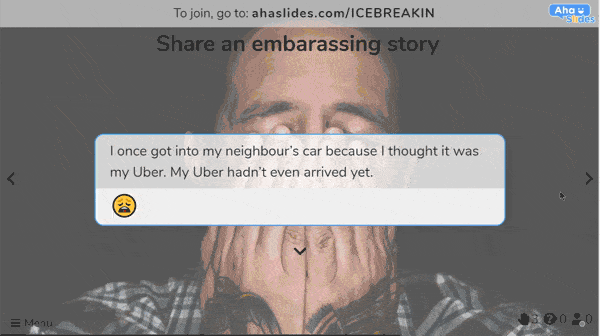
- Skąd jesteś? – Ta opiera się na rodzaju geograficznego pokrewieństwa, jakie osiągają dwie osoby, gdy uświadamiają sobie, że pochodzą z tego samego miejsca. Po prostu zapytaj uczestników, skąd się logują, a następnie pokaż wyniki w jednym dużym chmura słów na końcu.
⭐ Znajdziesz ładuje więcej wirtualnych lodołamaczy, klikając tutaj. Osobiście uwielbiamy zaczynać nasze wirtualne spotkania od właściwej nogi, od przełamania lodów, i nie ma powodu, dla którego nie miałbyś znaleźć tego samego!
Porada 6: Zagraj w kilka gier
Wirtualne sesje szkoleniowe nie muszą być (i zdecydowanie nie powinny być) nawałnicą nudnych, zapomnianych informacji. Są to duże możliwości dla niektórych gry zespołowe; w końcu, jak często będziesz zbierać wszystkich swoich pracowników w tym samym wirtualnym pokoju?
Rozmieszczenie kilku gier w trakcie sesji pomoże utrzymać wszystkich w stanie czuwania i utrwalić przyswojone informacje.
Oto kilka gier, które możesz dostosować do wirtualnego treningu:
- Niebezpieczeństwo – Korzystanie z bezpłatnej usługi jeopardylabs.com, możesz stworzyć planszę Jeopardy na podstawie przedmiotu, którego uczysz. Po prostu stwórz 5 lub więcej kategorii i 5 lub więcej pytań dla każdej kategorii, przy czym pytania będą stopniowo coraz trudniejsze. Podziel uczestników na drużyny, aby zobaczyć, kto zbierze najwięcej punktów!
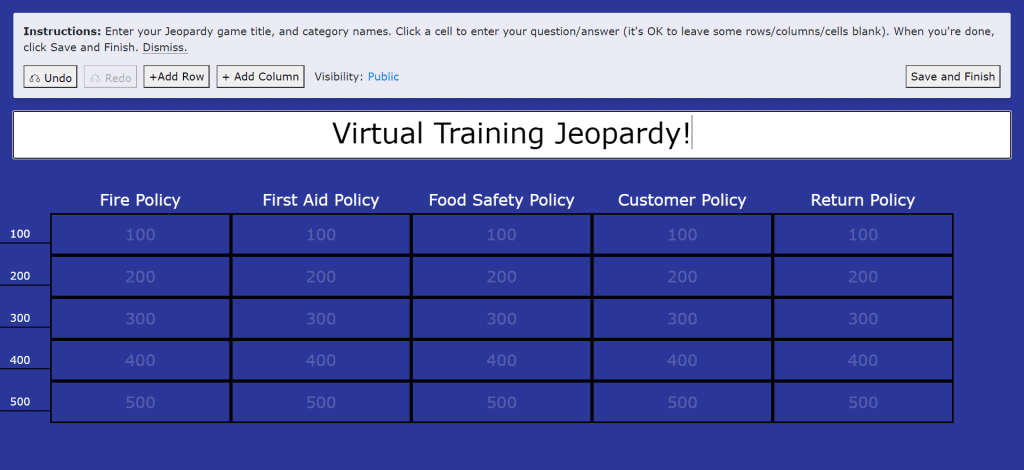
2. Fictionary / Balderdash – Podaj fragment terminologii, której właśnie nauczyłeś i poproś graczy o podanie właściwego znaczenia tego słowa. Może to być pytanie otwarte lub wielokrotnego wyboru, jeśli jest trudne.
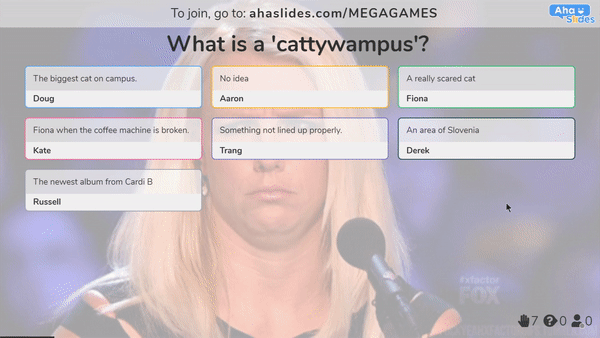
⭐ Mamy kilka innych gier dla Ciebie tutaj. Możesz dowolnie dopasować listę do tematu swojego wirtualnego szkolenia, a nawet dodać nagrody dla zwycięzców.
Porada 7: Niechaj nauczą
Zachęcanie uczniów do nauczania czegoś, czego się właśnie nauczyli, to świetny sposób na utrwalić te informacje w ich umysłach.
Po mega części wirtualnej sesji szkoleniowej zachęć uczestników, aby zgłosili się na ochotnika, aby podsumowali główne punkty reszcie grupy. Może to być tak długie lub krótkie, jak chcą, ale głównym celem jest pokonanie głównych punktów.

Można to zrobić na kilka sposobów:
- Podziel uczestników na wirtualne grupy breakout, przekazać im pewne aspekty informacji, podsumować i dać im 15 minut na przedstawienie prezentacji na ten temat.
- Zapytaj o ochotników aby podsumować główne punkty bez czasu na przygotowanie. To podejście jest bardziej ogólne, ale jest dokładniejszym testem czyjegoś zrozumienia.
Następnie możesz zapytać resztę grupy, czy nauczyciel-wolontariusz czegoś nie przeoczył, lub po prostu sam uzupełnij luki.
Porada 8: Użyj ponownego uchwalenia
Tutaj celowo staramy się unikać słowa „odgrywanie ról”. Każdy boi się koniecznego zła odgrywania ról, ale „rekonstrukcja' nadaje temu bardziej atrakcyjny charakter.
W rekonstrukcji dajesz swoim grupom uczestników większą kontrolę. Pozwalasz im wybierz, jakiego rodzaju sytuację chcą ponownie uchwalić, kto chce odgrywać jaką rolę i jaki dokładnie ton przybierze rekonstrukcja.

Możesz to zrobić online w następujący sposób:
- Umieść swoich uczestników w grupy breakout.
- Daj im kilka minut na omówienie sytuacji, którą chcieliby odtworzyć.
- Daj im określoną ilość czasu na udoskonalenie scenariusza i działań.
- Przenieś każdą grupę z powrotem do głównej sali, aby wystąpić.
- Otwarcie omówcie, co każda grupa zrobiła dobrze i jak każda grupa mogłaby się poprawić.
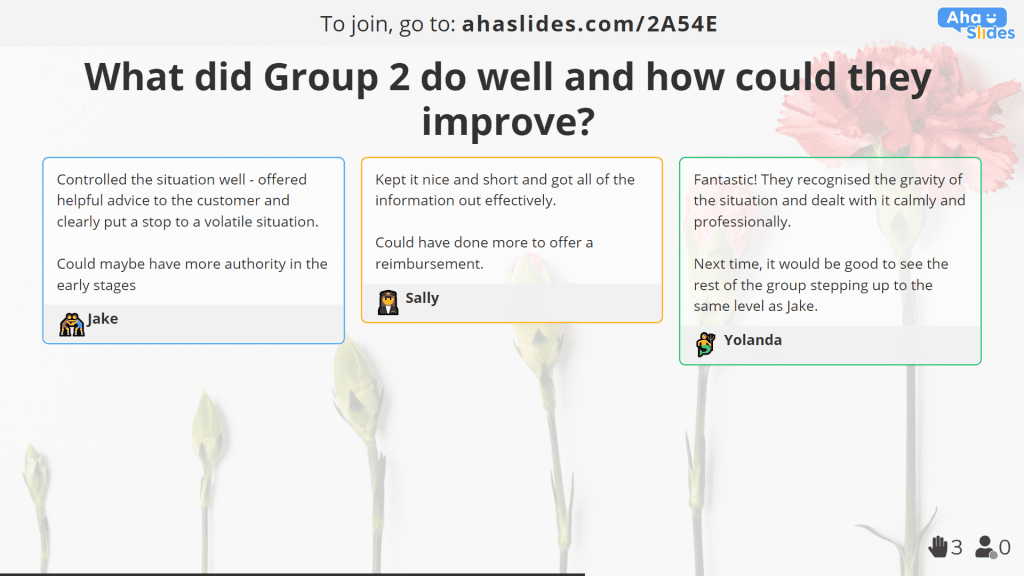
Oferowanie większej kontroli często prowadzi do większego zaangażowania i większego poświęcenia temu, co tradycyjnie uważa się za najgorszą część każdej sesji szkoleniowej. Daje każdemu rolę i sytuację, w której czuje się komfortowo, a zatem może być super pomocne w rozwoju.
📊 Wskazówki dotyczące prezentacji
Podczas wirtualnego treningu kamera jest mocno zamocowana ty. Bez względu na to, ile fantastycznej pracy w grupie wykonujesz, wszyscy uczestnicy będą patrzeć na Ciebie i prezentowane przez Ciebie informacje, aby uzyskać wskazówki. Dlatego Twoje prezentacje muszą być mocne i skuteczne. Prezentowanie twarzy przez kamery, a nie ludziom w pokojach, to zupełnie inna gra.
Wskazówka # 9: Postępuj zgodnie z regułą 10, 20, 30
Nie miej wrażenia, że Twoi uczestnicy mają nienormalnie krótki czas skupienia uwagi. Nadmierne używanie Powerpointa prowadzi do bardzo realnej plagi zwanej Śmierć przez Powerpointi to wpływa każda przeglądarka slajdów, nie tylko dyrektorów marketingu.
Najlepszą odtrutką na to jest Guy Kawasaki 10, 20, 30 rządzićZasada jest taka, że prezentacje nie powinny mieć więcej niż 10 slajdów, trwać nie dłużej niż 20 minut i używać czcionki nie mniejszej niż 30 punktów.
Dlaczego warto stosować zasadę 10, 20, 30?
- Większe zaangażowanie – Rozpiętość uwagi jest zwykle jeszcze mniejsza w świecie online, więc zaangażowanie się w prezentację 10, 20, 30 jest jeszcze ważniejsze.
- Mniej bzdur – Skupienie się na naprawdę niezbędnych informacjach oznacza, że uczestnicy nie będą zdezorientowani rzeczami, które tak naprawdę nie mają znaczenia.
- Bardziej niezapomniany – Oba poprzednie punkty razem wzięte składają się na porywającą prezentację, która na długo pozostaje w pamięci.
Porada 10: Uzyskaj obraz
Istnieje praktycznie tylko jeden przypadek, w którym ktoś mógłby uznać za słuszne użycie wyłącznie tekstu zamiast elementów wizualnych – lenistwo. Wielokrotnie udowodniono, że wizualizacje są najlepszym sposobem na oczarowanie odbiorców i pobudzenie ich pamięci na temat Twoich informacji.
- Odbiorcy są 30 razy bardziej skłonni przeczytać dobrą infografikę niż zwykły tekst. (Kissmetrics)
- Instrukcje przekazywane za pośrednictwem mediów wizualnych, zamiast zwykłego tekstu, mogą być o 323% jaśniejsze. (Springer Link)
- Umieszczenie twierdzeń naukowych na prostych wykresach może podnieść ich wiarygodność wśród ludzi z 68% do 97% (Cornell University)
Moglibyśmy tak dalej, ale prawdopodobnie już przekazaliśmy nasz punkt widzenia. Wizualizacje sprawiają, że Twoje informacje są atrakcyjniejsze, bardziej przejrzyste i bardziej wiarygodne.

Nie mamy tu na myśli tylko wykresów, ankiet i tabel. Wizualizacje zawiera obrazy i filmy, które pozwalają oczom oderwać się od ścian tekstu, i które mogą zilustrować punkty znacznie lepiej niż słowa.
W rzeczywistości podczas wirtualnego szkolenia to jeszcze łatwiej aby wykorzystać wizualizacje. Możesz również reprezentować koncepcje i sytuacje za pomocą rekwizytów nad kamerą, takich jak…
- Sytuacja do rozwiązania (np. Kłótnia dwóch marionetek).
- Protokół bezpieczeństwa, którego należy przestrzegać (np. Rozbite szkło na stole).
- Etyczna kwestia (np. wypuszczając rój komarów złożyć oświadczenie o malarii).
Porada 11: Rozmawiaj, dyskutuj, debatuj
Wszyscy byliśmy na prezentacjach, gdzie prezenter po prostu czytał słowa ze swojej prezentacji, nie dodając niczego więcej. Robią to, ponieważ łatwiej jest ukryć się za technologią niż improwizować i dostarczać spostrzeżeń.
Podobnie, zrozumiałe jest, dlaczego wirtualni organizatorzy szkoleń skłaniają się ku całej armii narzędzi online: są one niezwykle łatwe do skonfigurowania i uruchomienia, prawda?
Cóż, jak wszystko na wirtualnej sesji treningowej, łatwo przesadzićPamiętaj, że dobre prezentacje to nie tylko potok słów na ekranie; to ożywione dyskusje i angażujące debaty, które poruszają wiele różnych perspektyw.

Oto kilka krótkich wskazówek, jak zmienić swoją prezentację werbalną…
- Regularnie przerywaj zadawać otwarte pytanie.
- Popierać kontrowersyjne perspektywy (możesz to zrobić za pomocą anonimowego slajdu prezentacji).
- Zapytać o przykłady rzeczywistych sytuacji i sposobów ich rozwiązania.
Porada 12: Miej kopię zapasową
Choć współczesna technologia poprawia jakość naszego życia i treningów, nie daje gwarancji niezawodności.
Planowanie całkowitej awarii oprogramowania może wydawać się pesymistyczne, ale jest też częścią solidna strategia co zapewnia, że sesja może przebiegać bez problemów.

Do każdego narzędzia do szkoleń online dobrze jest mieć jeszcze jedno lub dwa, które w razie potrzeby mogą okazać się pomocne. To obejmuje Twoje…
- Oprogramowanie do wideokonferencji
- Oprogramowanie do interakcji
- Oprogramowanie do odpytywania na żywo
- Oprogramowanie do quizów
- Oprogramowanie do tablicy online
- Oprogramowanie do udostępniania wideo
Wypisaliśmy kilka świetnych, darmowych narzędzi do tego celu Tu na dole. Istnieje wiele alternatyw dla każdego z nich, więc zrób rozeznanie i zabezpiecz swoje kopie zapasowe!
👫 Wskazówki dotyczące interakcji
Odeszliśmy daleko od jednokierunkowego stylu wykładów z przeszłości; nowoczesna, wirtualna sesja szkoleniowa to dwukierunkowy dialog który utrzymuje zaangażowanie publiczności przez cały czas. Interaktywne prezentacje prowadzą do lepszej pamięci tematu i bardziej spersonalizowanego podejścia.
Uwaga ⭐ 5 poniższych wskazówek zostało uwzględnionych AhaSlajdy, bezpłatne oprogramowanie do prezentacji, ankiet i quizów, które specjalizuje się w interaktywności. Wszystkie odpowiedzi na pytania zostały przesłane przez uczestników podczas wydarzenia na żywo.
Porada 13: Zbieraj informacje przez chmury słów
Jeśli szukasz krótkich, krótkich odpowiedzi, żywe chmury słów są drogą do zrobienia. Widząc, jakie słowa pojawiają się najczęściej i jakie słowa łączą się z innymi, możesz uzyskać wiarygodne ogólne wrażenie swoich uczniów.
Chmura słów zasadniczo działa w ten sposób:
- Zadajesz pytanie, na które można odpowiedzieć w jednym lub dwóch słowach.
- Twoja publiczność przekazuje swoje słowa.
- Wszystkie słowa wyświetlane są na ekranie w formie kolorowej „chmury”.
- Najpopularniejsze były słowa z największym tekstem.
- Im mniej przesłano słów, tym ich liczba stawała się mniejsza.
Oto świetny przykład, który możesz wykorzystać na początku (lub nawet przed) sesją:
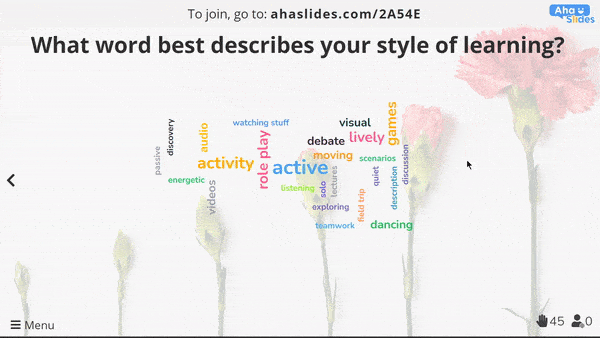
Tego rodzaju pytanie w slajdzie chmury słów może pomóc Ci łatwo zwizualizować styl uczenia się większości w Twojej grupie. Widząc słowa takie jak „aktywny„,”działalność' i 'żywy„ponieważ najczęstsze odpowiedzi pokażą Ci, że powinieneś dążyć do aktywności i dyskusji opartych na Robi coś.
Wskazówka 👊: Możesz kliknąć na najpopularniejsze słowo na środku, aby je usunąć. Zostanie ono zastąpione przez następne najpopularniejsze słowo, więc zawsze będziesz w stanie określić ranking popularności między odpowiedziami.
Porada 14: Przejdź do ankiet
Wspominaliśmy już, że efekty wizualne są angażujące, ale są nawet więcej angażujące, jeśli materiały wizualne są dostarczane przez samych widzów.
W jaki sposób? Cóż, posiadanie ankiety daje Twoim uczestnikom szansę wizualizować własne dane. Pozwala im zobaczyć swoje opinie lub wyniki w stosunku do innych, a wszystko to na kolorowym wykresie, który wyróżnia się na tle innych.
Oto kilka pomysłów na ankiety, których możesz użyć:
- Co byłoby pierwszą rzeczą, jaką zrobiłbyś w takiej sytuacji? (Wielokrotny wybór)
- Które z poniższych działań uważasz za największe zagrożenie pożarowe? (Obraz wielokrotnego wyboru)
- Jak dobrze, Twoim zdaniem, Twoje miejsce pracy ułatwia te aspekty bezpiecznego przygotowywania żywności? (Skala)
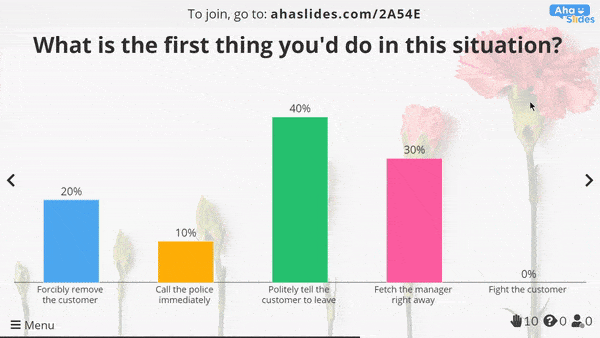
Pytania zamknięte, takie jak te, są świetne do uzyskania danych ilościowych od Twojej grupy. Pomagają Ci łatwo zwizualizować wszystko, co chcesz zmierzyć i mogą być umieszczone na wykresie dla Twojej korzyści i korzyści Twoich uczestników.
Wskazówka # 15: Bądź otwarty
Chociaż pytania zamknięte mogą być świetne do prostego, szybkiego gromadzenia danych, naprawdę się opłaca otwarty w twoim głosowaniu.
Mówimy o pytaniach, na które nie można odpowiedzieć głosowaniem ani prostym „tak” lub „nie”. Pytania otwarte skłaniają do bardziej przemyślanej, osobistej odpowiedzi i mogą być katalizatorem dłuższej i bardziej owocnej rozmowy.
Podczas prowadzenia następnej wirtualnej sesji szkoleniowej wypróbuj te otwarte pytania:
- Co chcesz zyskać na tej sesji?
- Jaki temat chcesz dziś omówić najbardziej?
- Jakie jest największe wyzwanie, z jakim spotykasz się w miejscu pracy?
- Gdybyś był klientem, jak spodziewałbyś się być traktowany w restauracji?
- Jak myślisz, jak poszła ta sesja?
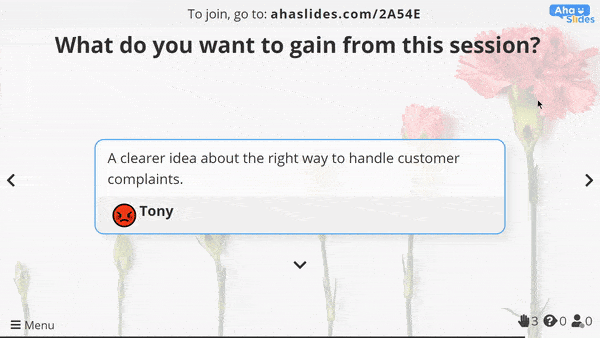
Porada 16: Segment pytań i odpowiedzi
W pewnym momencie wirtualnej sesji szkoleniowej musisz zapewnić uczestnikom czas na quiz ty.
To świetna okazja, aby bezpośrednio odnieść się do obaw, które mają twoi uczestnicy. Segment pytań i odpowiedzi jest przydatny nie tylko dla tych, którzy pytają, ale także dla tych, którzy słuchają.
| Wskazówka 👊: Zoom nie może zapewnić anonimowości osobom zadającym pytania, chociaż oferowanie anonimowości jest pewnym sposobem na uzyskanie większej liczby pytań. Korzystanie z bezpłatnego oprogramowania, takiego jak AhaSlides, może ukryć tożsamość odbiorców i zachęcić do większego zaangażowania w sesję pytań i odpowiedzi. |
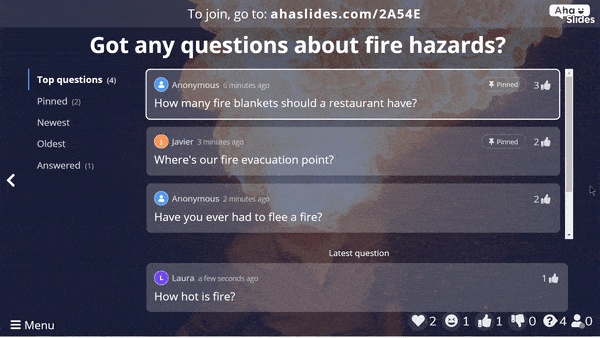
Slajd pytań i odpowiedzi nie tylko zwiększa anonimowość, ale także pomaga uporządkować sesję pytań i odpowiedzi na kilka sposobów:
- Uczestnicy mogą przesyłać Ci swoje pytania, a następnie oznaczać „pozytywnie” pytania innych osób, na które chcieliby otrzymać odpowiedź.
- Możesz zamawiać pytania w porządku chronologicznym lub według popularności.
- Możesz przypiąć ważne pytania, na które chcesz odpowiedzieć później.
- Możesz oznaczyć pytania jako odpowiedzi, aby przenieść je do zakładki „odpowiedzi”.
Wskazówka # 17: Rozwiąż quiz
Zadawanie pytań za pytaniem może szybko stać się żmudne. Jednak quiz sprawia, że krew staje się bardziej pompowana i jak nic innego ożywia wirtualną sesję treningową. To także sprzyja zdrowa konkurencja, który zostało udowodnione aby zwiększyć poziom motywacji i energii.
Rozwiązywanie szybkich quizów to fantastyczny sposób na sprawdzenie poziomu zrozumienia przekazanych informacji. Zalecamy przeprowadzenie szybkiego quizu po każdej ważnej sekcji szkolenia online, aby upewnić się, że uczestnicy mają wszystko w porządku.
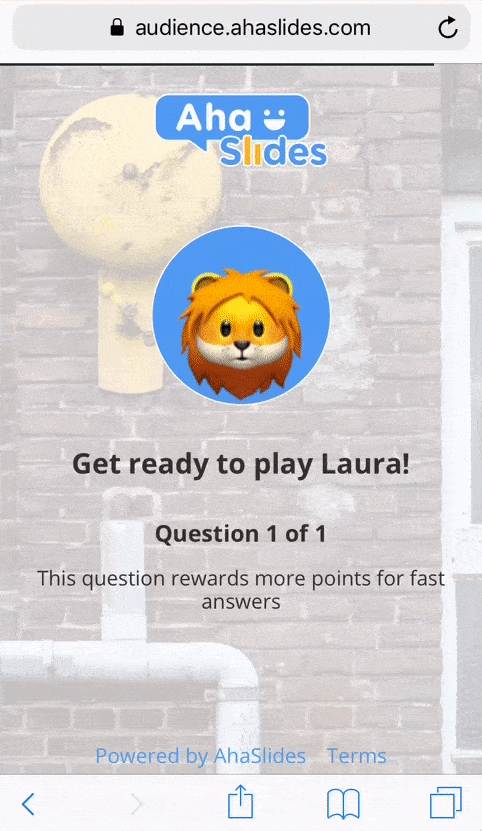
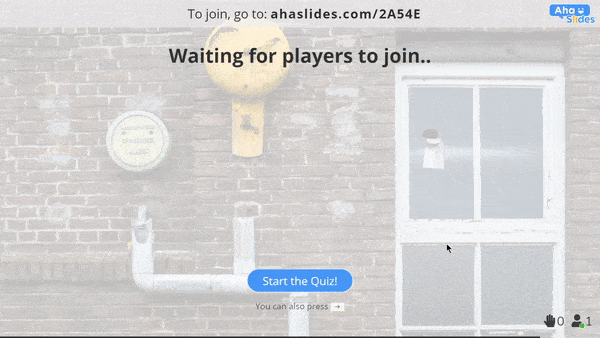
Zapoznaj się z poniższymi pomysłami na zorganizowanie quizu, który przyciąga uwagę i utrwala informacje:
- Wielokrotny wybór – Te szybkie pytania doskonale sprawdzają się w zrozumieniu scenariuszy z jednoznacznymi odpowiedziami.
- Wpisz odpowiedź – Trudniejsza wersja pytań wielokrotnego wyboru. Pytania polegające na wpisaniu odpowiedzi nie oferują listy odpowiedzi do wyboru; wymagają od uczestników prawdziwego skupienia, a nie tylko zgadywania.
- Audio - Istnieje kilka bardzo przydatnych sposobów wykorzystania dźwięku w quizie. Jeden służy do symulacji kłótni i pytania uczestników, jak by zareagowali, a nawet do odtwarzania zagrożeń dźwiękowych i proszenia uczestników o wskazanie niebezpieczeństw.
Darmowe narzędzia do wirtualnego szkolenia

Jeśli chcesz zorganizować wirtualną sesję szkoleniową, możesz być pewien, że teraz jest to możliwe stosy narzędzi Dostępny dla Ciebie. Oto kilka bezpłatnych, które pomogą Ci przejść z trybu offline do online.
Miro – Wirtualna tablica, na której możesz ilustrować koncepcje, tworzyć schematy blokowe, zarządzać karteczkami samoprzylepnymi itp. Twoi podopieczni również mogą się do tego przyczynić, zarówno na innej tablicy, jak i na tej samej, której używasz.
Narzędzia umysłu – Świetne porady dotyczące planów lekcji, z możliwością pobrania szablonu.
Watch2Getther – Narzędzie, które synchronizuje filmy pomiędzy różnymi połączeniami, co oznacza, że każdy w Twojej grupie może oglądać instruktaż lub film szkoleniowy dokładnie w tym samym czasie.
Powiększenie/Zespoły Microsoft – Naturalnie, dwa najlepsze rozwiązania do prowadzenia wirtualnych sesji szkoleniowych. Oba są bezpłatne (choć mają swoje ograniczenia) i oba pozwalają tworzyć pokoje spotkań dla mniejszych grup.
AhaSlajdy – Narzędzie, które umożliwia tworzenie interaktywnych prezentacji, ankiet, quizów, gier i nie tylko. Możesz utworzyć prezentację za pomocą łatwego w obsłudze edytora, wstawić slajdy ankiety lub quizu, a następnie zobaczyć, jak odbiorcy reagują lub jak sobie radzą na swoich telefonach.

Dołącz do setek tysięcy prezenterów, trenerów i quizowiczów korzystających z interaktywnego oprogramowania
Spróbuj za darmo!
Zdjęcie główne dzięki uprzejmości Brytyjska Rada Bezpieczeństwa
Najczęściej zadawane pytania
Co to jest szkolenie wirtualne?
Szkolenie wirtualne to szkolenie, które odbywa się online, w przeciwieństwie do bezpośredniego kontaktu. Szkolenie może przybierać wiele form cyfrowych, takich jak Webinar, Transmisja strumieniowa w YouTube lub wewnętrzna rozmowa wideo, przy czym cała nauka, ćwiczenia i testy odbywają się za pośrednictwem wideokonferencji i innych narzędzi online.
Co robi Virtual Trainer?
Jako wirtualny moderatorTwoim zadaniem jest utrzymanie treningu na właściwym torze i prowadzenie grupy prezentacje, dyskusje, Studia przypadków oraz działania online. Jeśli to nie brzmi zbyt różnie od zwykłego treningu, spróbuj go przeprowadzić bez żadnych fizycznych materiałów, za to z dużą siatką twarzy wpatrzonych w ciebie!
Dlaczego szkolenia wirtualne są ważne?
Convenience – Wirtualne szkolenie może odbywać się absolutnie wszędzie, gdzie jest połączenie internetowe. Łączenie się w domu jest po prostu nieskończenie lepsze od długiej porannej rutyny i dwóch długich dojazdów do szkolenia twarzą w twarz.
Zielony – Nie wyemitowano ani jednego miligrama dwutlenku węgla!
Tani – Brak konieczności wynajmu pokoju, zapewnienia posiłków i kosztów transportu.
Anonimowość – Pozwól uczestnikom szkolenia wyłączyć kamery i odpowiadać na pytania anonimowo; dzięki temu pozbędziesz się wszelkiego strachu przed osądem i zapewnisz swobodną, otwartą sesję szkoleniową.
Przyszłość – Ponieważ praca staje się coraz bardziej zdalna, wirtualne szkolenia będą coraz bardziej popularne. Korzyści jest już zbyt wiele, aby je ignorować!
Jakie są przykłady najlepszych praktyk w zakresie ułatwiania wirtualnego życia?
Przed sesjami trenerzy powinni zapoznać się z najnowszymi narzędziami i technikami, aby zapoznać się z najnowszymi wiadomościami, gdyż informacje te są bardzo przydatne dla uczestników!

